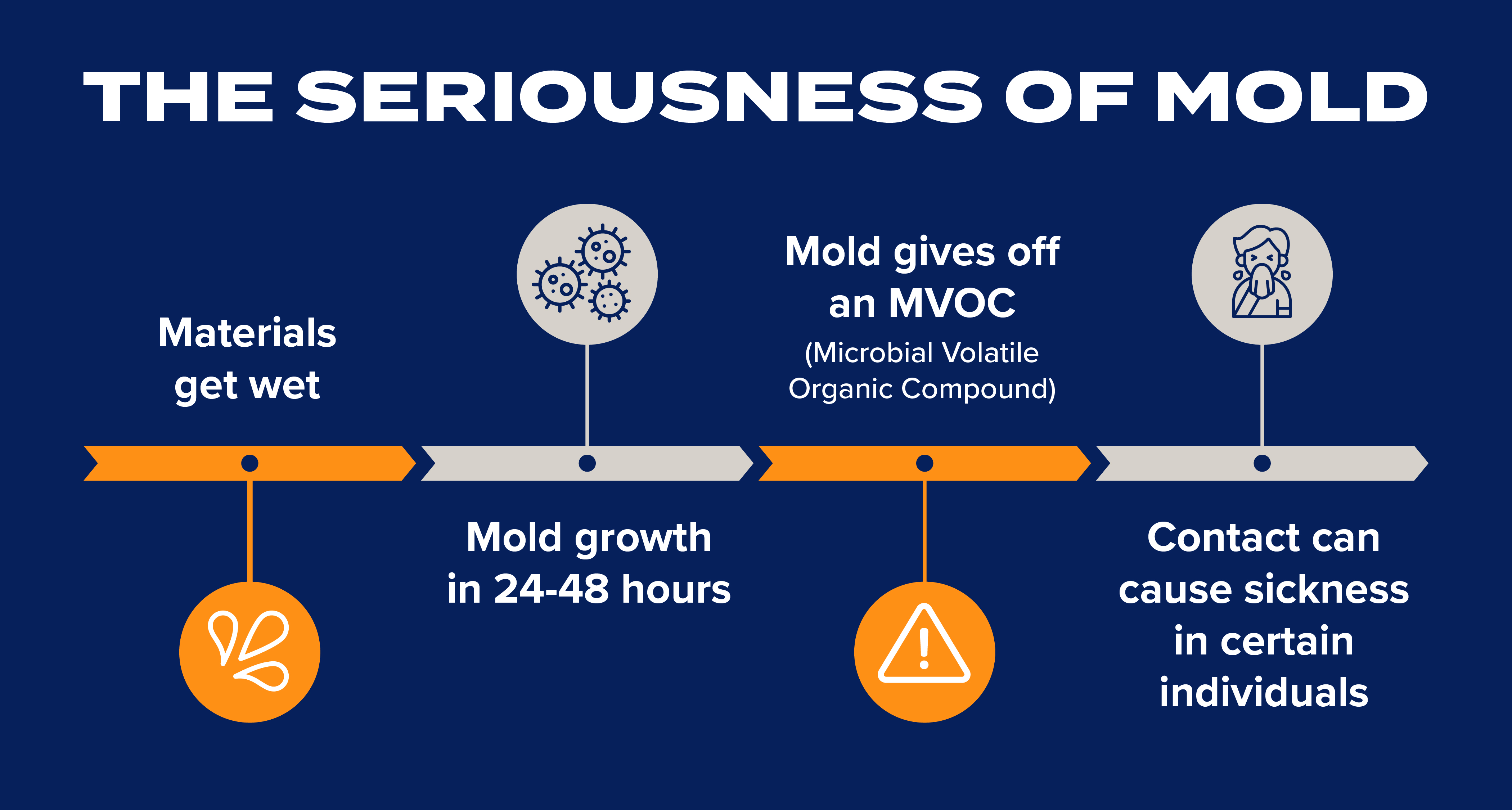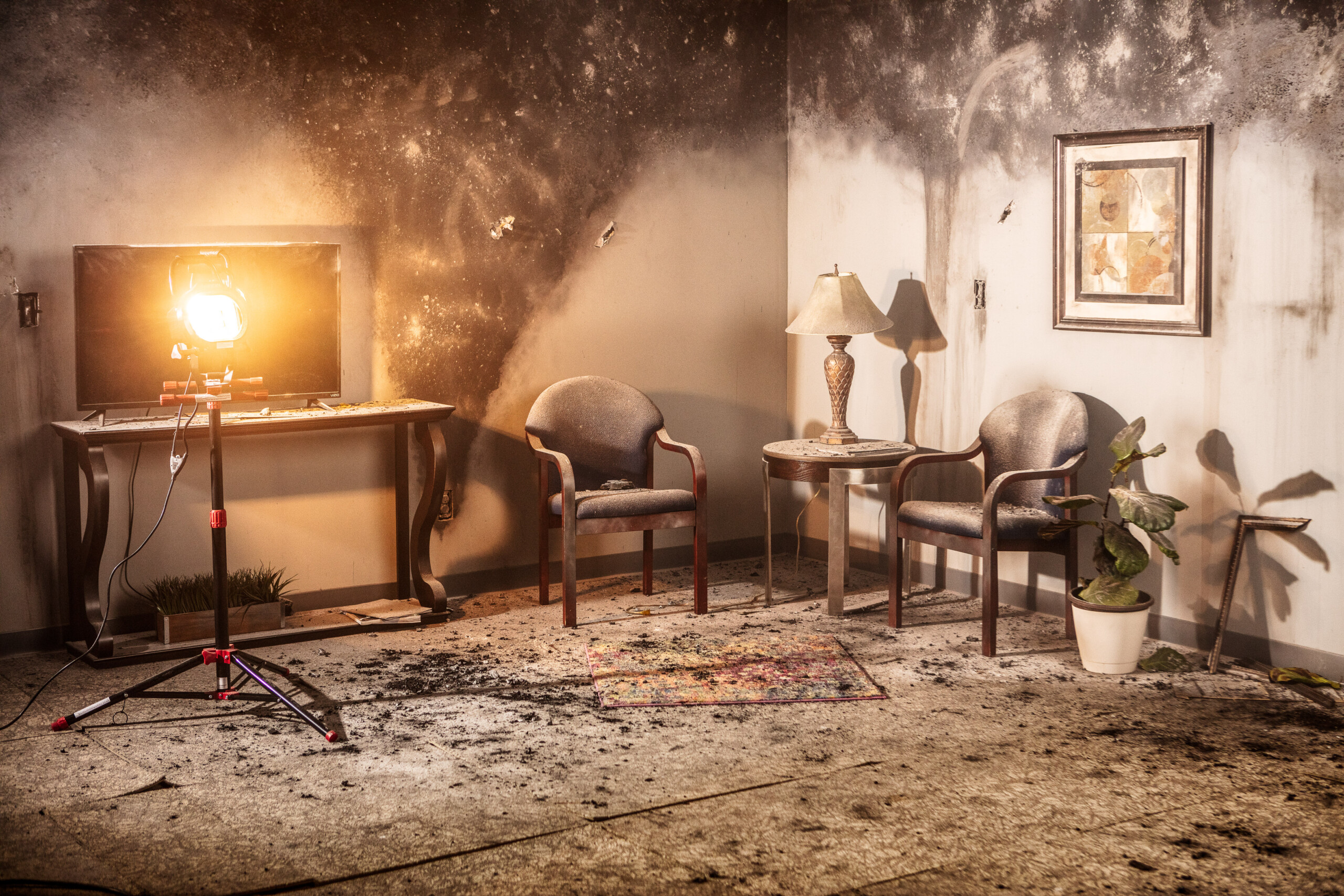We’ve all seen what fire damage can do to a property, but the types of damage you should be ready to encounter after experiencing a fire loss can exceed your expectations. Having full awareness of the different types of damage you will face can help you to react faster, reducing continued damage and getting you back on the road to recovery in short order. As you know, the faster your property recovers from damage lessens the impact on business downtime. Let’s talk about some of the other issues you may face.
FIRE DAMAGE IS MORE THAN JUST THE FLAMES
Fire damage incidents are emergency situations that require fast action by first responders. The fire department arrives with one objective top of mind; to save any people that are still in danger. This will be done by any means necessary, which inevitably creates more damage to your property. Their second objective is to save what remains of the property and eliminate the risk of the fire spreading.
Property managers and building owners know to expect ash and rubble, but what is often overlooked is the continued damage that is created while extinguishing the flames. Firefighters shoot hundreds of gallons of water into a property every minute to douse the raging fire within the space. Similarly, sprinkler systems within commercial facilities release up to 15 to 16 gallons of water per minute. That water needs to go somewhere, and that is often to the areas you do not want it to go to.
Let’s take a deeper dive into what firefighters often need to do to extinguish the fire and save lives and property.
- Firefighters often break windows and doors as a means of egress for occupants to escape.
- Other times they will cut open walls, ceilings, or the roof to allow heat or smoke to get out of the space.
- They may also need to create a firebreak. This is when you cut a large trench in between two roof trusses, stopping the fuel source and keeping the fire from expanding.
The big takeaway is that the firefighting team may need to create some damage in order to save the larger property. Now let’s get to the main point of why we bring this up.
A FIRE DAMAGE INCIDENT CAN VERY QUICKLY TAKE ON WATER DAMAGE
All that water used to extinguish the flames quickly becomes a new problem. It’s not uncommon for fire damage events to become water damage issues. Once the water is added to the building, the materials get wet. The threat of mold growth after a fire starts to take hold within 24-48 hours. Mold gives off MVOCs or Microbial Volatile Organic Compounds. If these compounds make contact with certain individuals, they can make them very sick.

When dealing with a fire damage incident that takes on water damage, here are some reactions you should be ready to implement.
- After the fire is extinguished, cover any holes created to help smoke and heat escape so that if it rains you aren’t dealing with a larger loss.
- Place air movers, dehumidifiers, and fans in adjacent areas to help dry out the space and keep it from spreading.
- Have generators brought to your site so you can generate power for day-to-day operations or necessary equipment until the power is restored.
- Call an experienced restoration partner like First Onsite to assist you with the fire damage restoration process. This is crucial for seeing that it’s done correctly.
FIRE DAMAGE RESTORATION SERVICES
Our experience has taught us that Fire Damage creates a variety of issues that go beyond the flames. That’s why our team comes equipped with the resources and knowledge to handle all disaster recovery events that impact your property. As disaster restoration evolves, we evolve with it.
If you have any questions about Fire Damage, Water Damage, or any other event that can impact your property, contact your local First Onsite office. We’re happy to answer any additional questions you may have.
First Onsite is a full-service disaster recovery and property restoration company serving North America and beyond. We partner with you to prepare for the threat of catastrophe and be the first team on-site after disaster strikes. We are on call 24 hours a day, 365 days a year, and you can request our services at any time.
Watch The Full Video
Learn more from First Onsite team members as we uncover the damage caused by a fire, the process of putting it out, and the aftermath. From smoke and soot to structural damage and water devastation, we shed light on the comprehensive nature of fire’s destructive path, reminding us that the road to recovery extends beyond extinguishing the flames themselves. We explore the complexities of fire damage that show the true extent of its impact.
